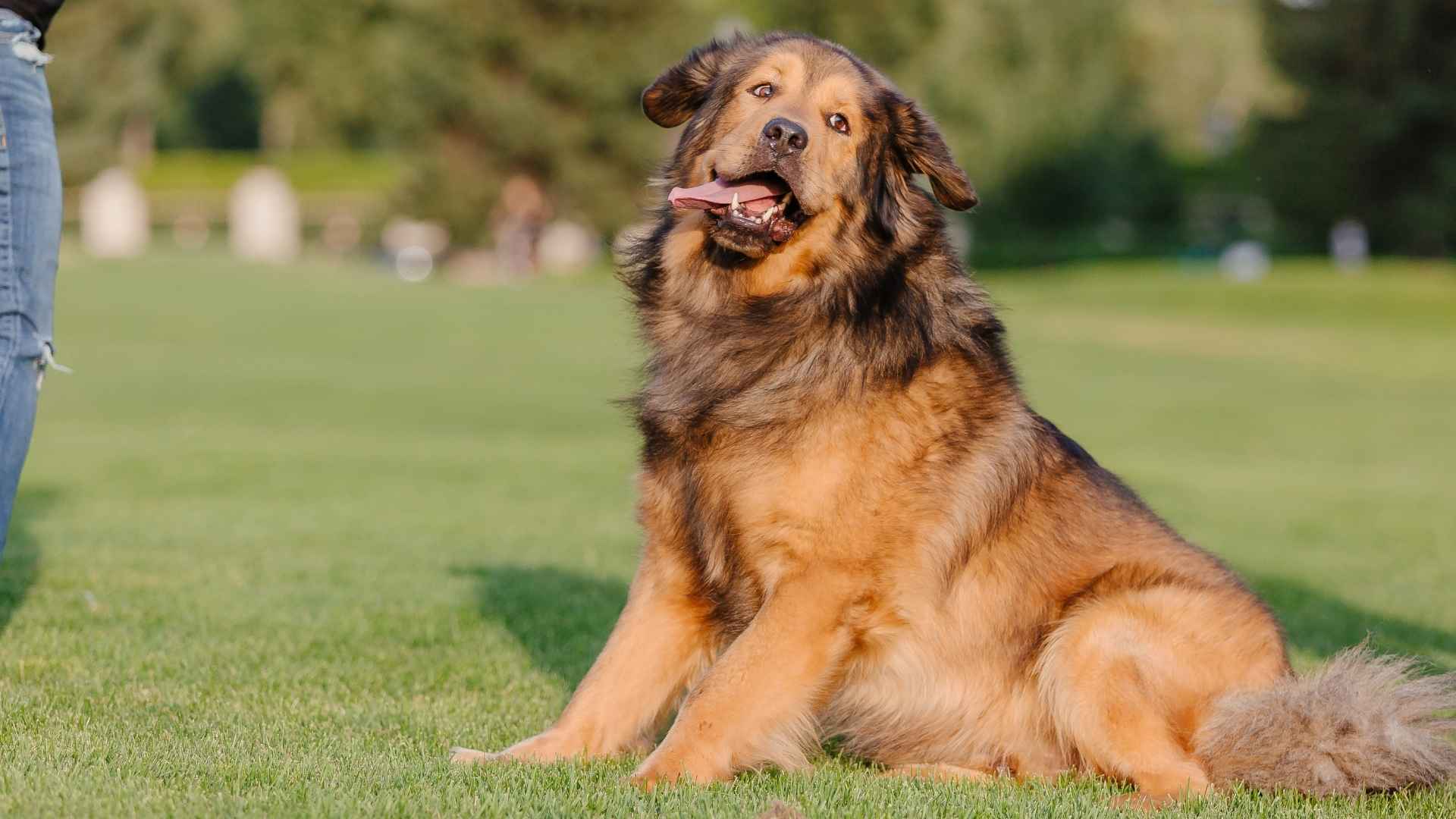When it comes to making a statement, few companions rival the presence of a large built dog. Towering in stature and brimming with personality, these gentle giants offer a unique blend of strength, loyalty, and affection. Though their size can be imposing at first glance, most large dogs are calm, even-tempered, and deeply devoted to their families. Whether bred for protection, work, or companionship, they are as affectionate as they are impressive.
These breeds are best suited to owners who can offer space, structure, and time. While many are surprisingly mellow indoors, their physical strength and protective instincts mean they thrive with experienced guidance and thoughtful training. From ancient guardians to mountain rescuers and everything in between, large-breed dog breeds have left their mark in history and continue to win hearts today.
In this guide, we’ll explore some of the most iconic and beloved large dog breeds—each one a powerhouse in both form and spirit. Whether you’re looking for a loyal family protector, a steady working dog, or a gentle-hearted companion with an extra-large cuddle factor, there’s a breed on this list for you.
Large Build Dog Breeds
1. Tibetan Mastiff
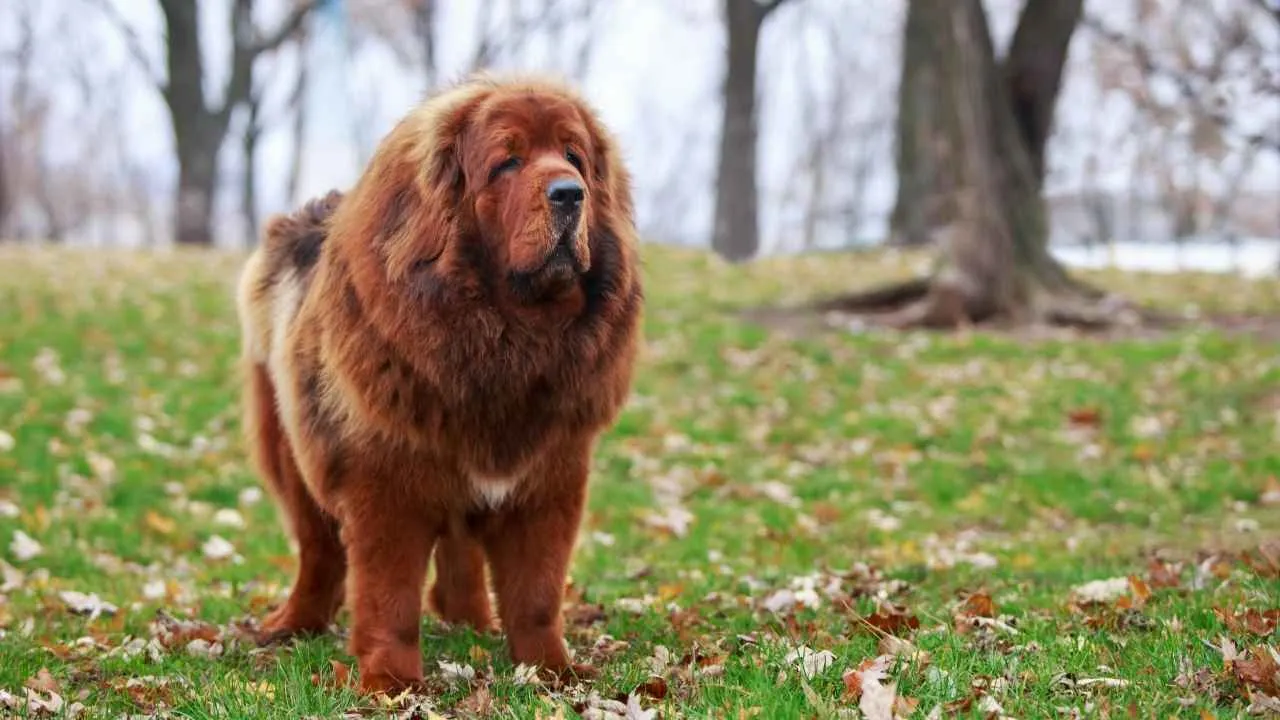
Weight: 70–150 lbs
Height: 24–30 inches
Temperament: Independent, Protective, Calm
The Tibetan Mastiff is an ancient guardian breed with a powerful frame and an equally strong will. Originally bred to protect livestock in the Himalayas, this breed thrives on independence and often acts with confidence and quiet authority.
They form tight bonds with their family and are highly naturally protective, making them exceptional watchdogs. While loving toward their own people, they tend to be aloof with strangers and should be well-socialized early.
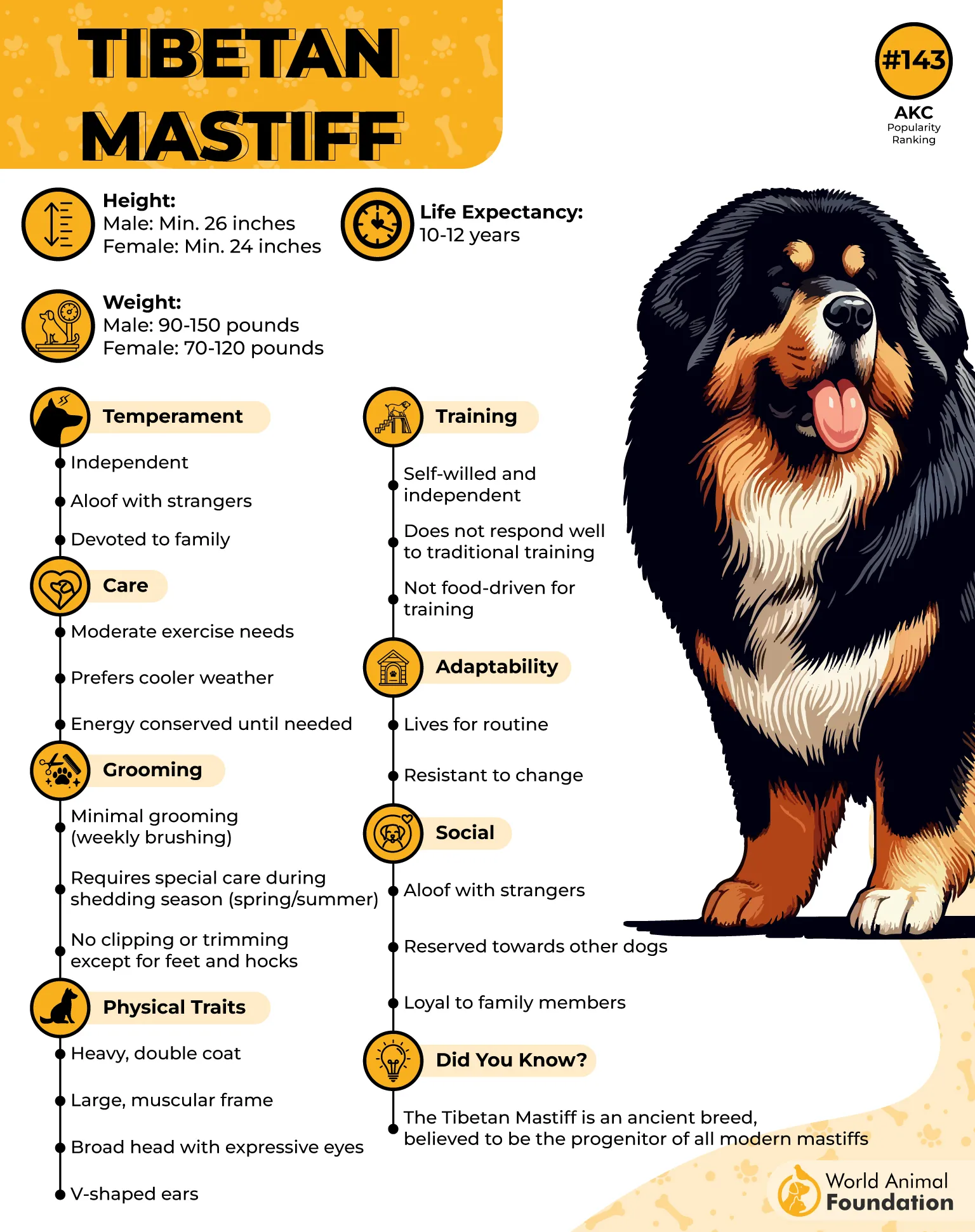
With their thick double coat and lion-like mane, Tibetan Mastiffs are striking in appearance. Weekly brushing helps manage their heavy seasonal shedding, and their grooming needs increase during spring and fall.
This breed isn’t overly active indoors but appreciates space and enjoys walks in cool weather. They tend to rest most of the day and become alert only when something seems out of place.
Training a Tibetan Mastiff requires consistency, patience, and respect. They’re not eager to please in the traditional sense but respond well to calm, firm leadership.
Ideal for experienced pet owners, Tibetan Mastiffs are best suited to homes with ample space and secure fencing. They’re not the best choice for small yards or high-energy households, but thrive where their independence is respected.
Fun Fact:
Tibetan Mastiffs were once used to guard entire villages and monasteries, often working independently without direct human supervision.
2. Saint Bernard
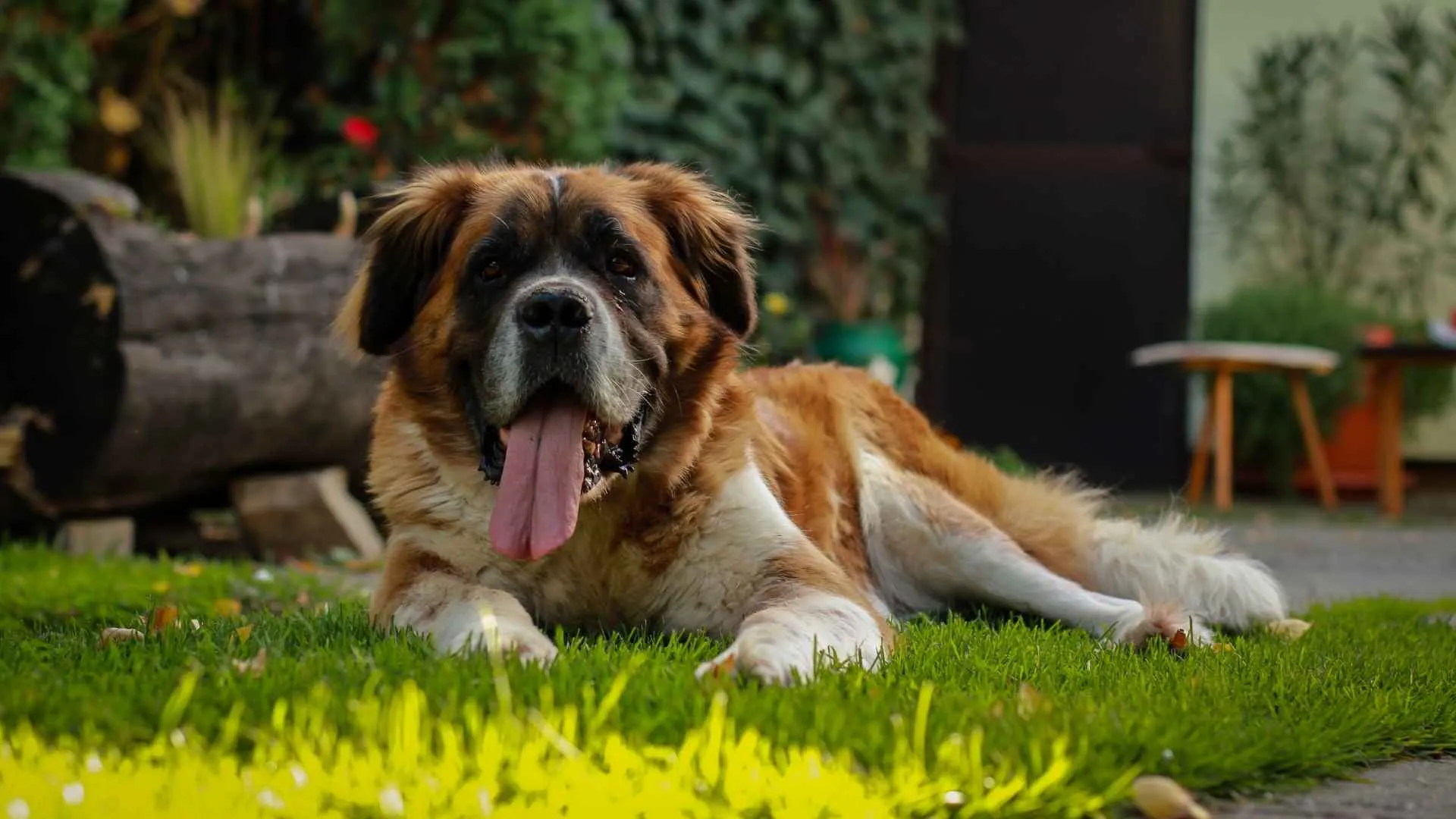
Weight: 120–180 lbs
Height: 26–30 inches
Temperament: Gentle, Patient, Devoted
The Saint Bernard is one of the most recognizable large breeds in the world, thanks to its massive build and famously gentle nature. Originally bred as a mountain dog for alpine rescue work by monks in Switzerland, this dog is as heroic as it is huggable.
AKC mentions that the Saint Bernards are famously kind and tolerant, making them excellent family dogs. They are incredibly patient with children and usually very sociable with other animals, although early socialization is still recommended.
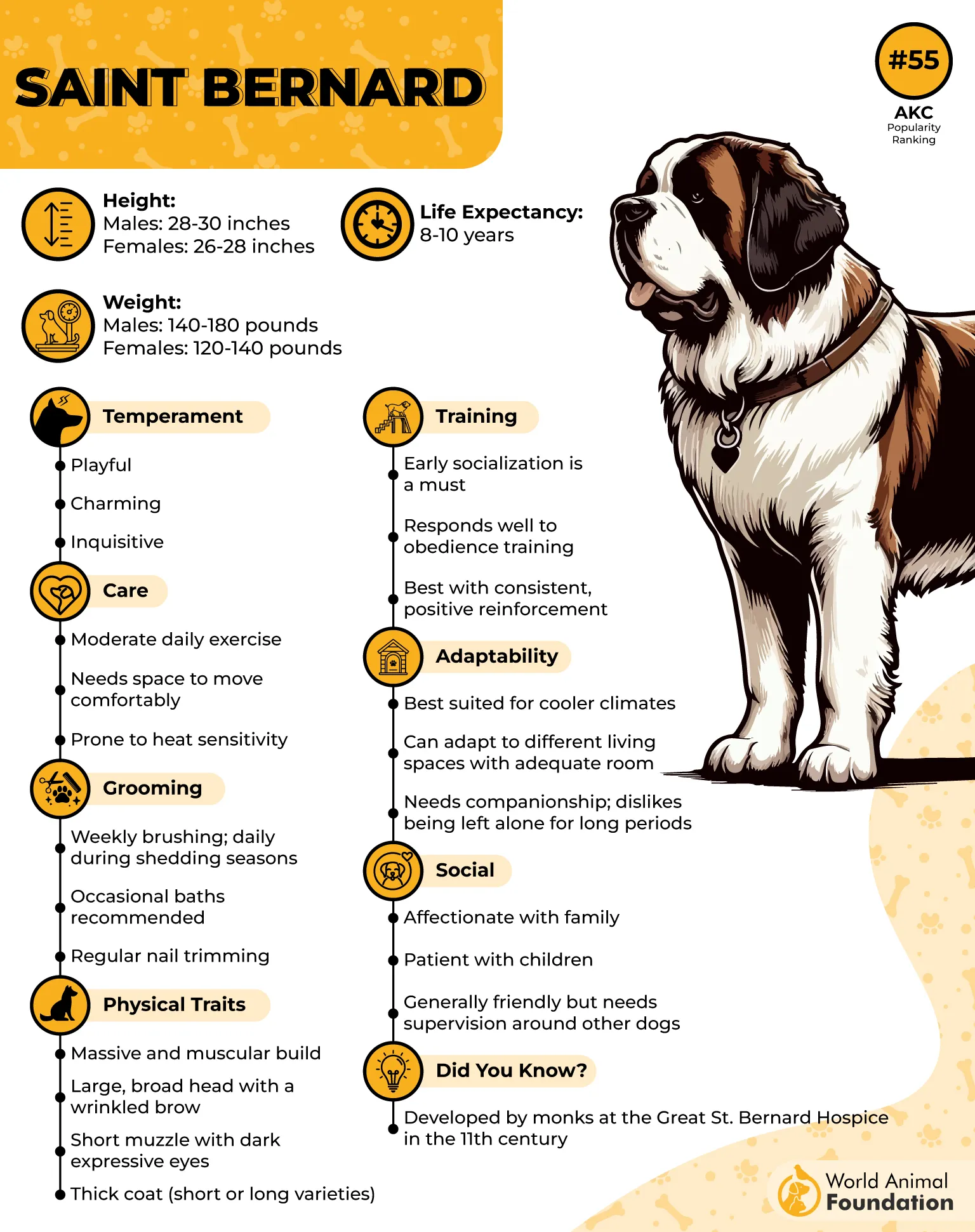
Despite their size, they are generally calm indoors and don’t require intense activity. A few leisurely walks and some time outdoors for light play are usually enough to satisfy them.
Their thick, heavy coat—available in both short and long varieties—requires regular grooming, especially during seasonal shedding. Their large jowls can also lead to some drooling, a small trade-off for such affection.
Training is typically straightforward, as they are eager to please and people-oriented. However, because of their sheer strength, early training and leash manners are essential.
Saint Bernards are ideal for pet owners with space and time to accommodate their needs. In return, they offer unwavering loyalty, calm companionship, and a gentle heart in an impressively large package.
Fun Fact:
The barrels seen around Saint Bernards’ necks in classic imagery were never real rescue gear, but the breed did save countless lives in snow-covered mountains.
3. Newfoundland
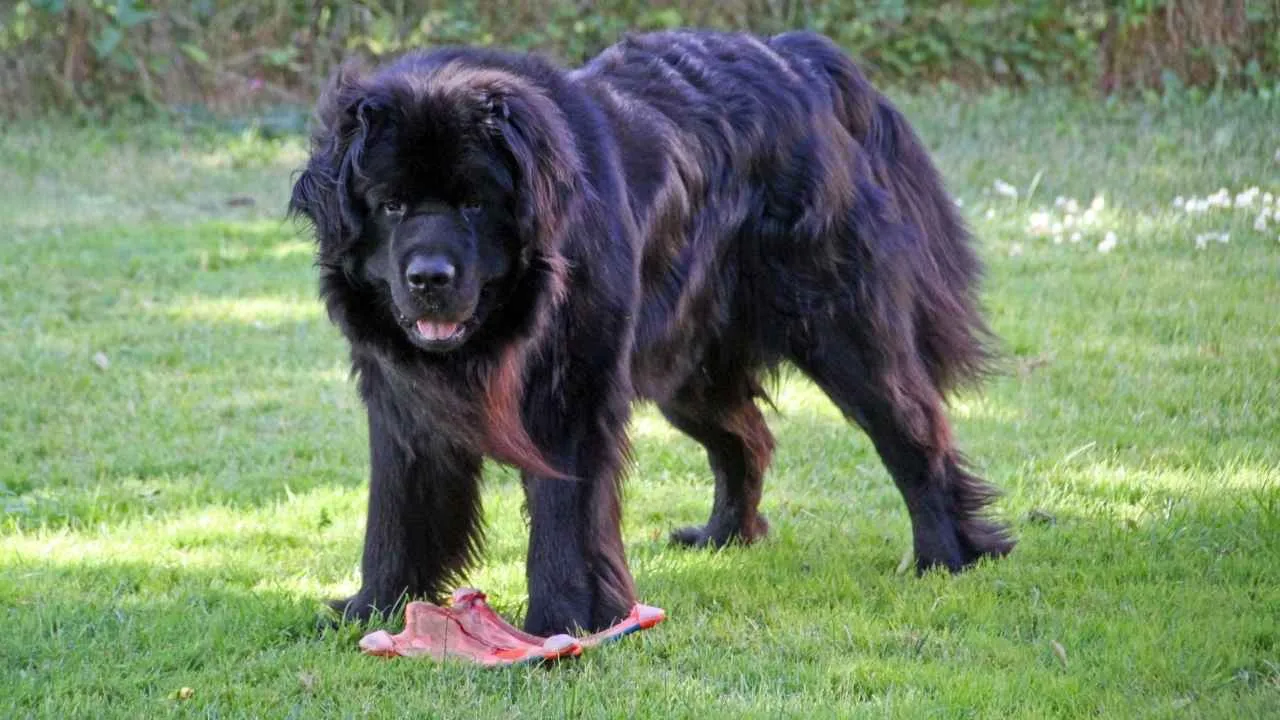
Weight: 100–150 lbs
Height: 26–28 inches
Temperament: Sweet, Calm, Protective
The Newfoundland is a gentle giant with a heart as big as its frame. Originally bred in Canada to help fishermen, this working breed excels in the water and is known for its strength, endurance, and swimming ability.
Newfoundlands are famous for their calm, sweet temperament. They’re particularly good with children and are often called “nanny dogs” for their natural patience and watchfulness around young family members.
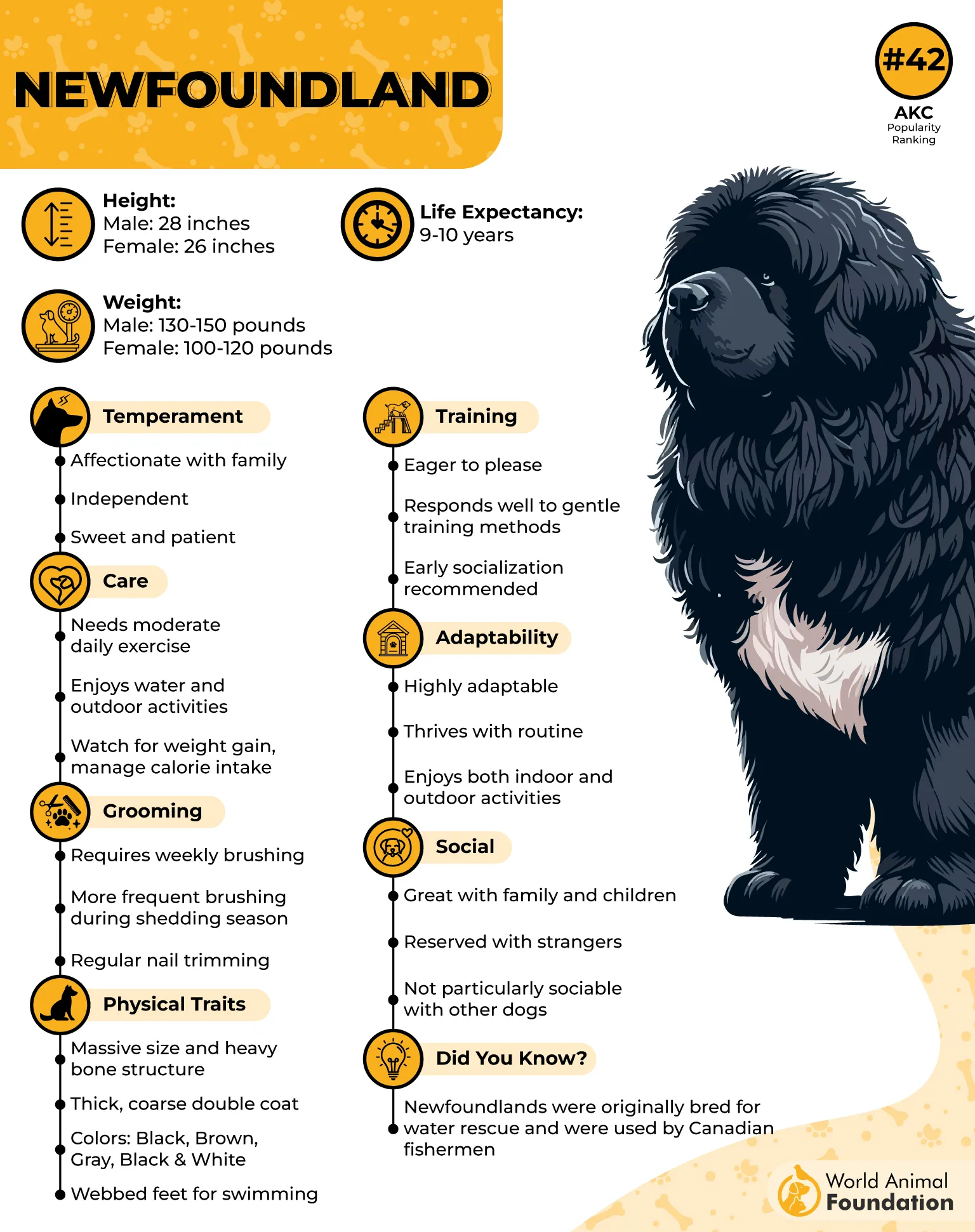
Despite their size, they are relatively easygoing indoors. They enjoy lying near their people and don’t demand constant activity, though they do appreciate long walks and the occasional swim.
Their dense, water-resistant, wavy coat requires regular brushing to prevent mats and manage shedding. Due to their droopy lips and jowls, you can expect some drooling, especially after eating or drinking.
Training a Newfoundland is a rewarding experience. They’re intelligent, people-focused, and generally eager to learn. However, they respond best to gentle, positive reinforcement.
These dogs are ideal for families who want a loyal companion with a protective streak. With space, structure, and affection, the Newfoundland thrives as a calm, affectionate presence in any home.
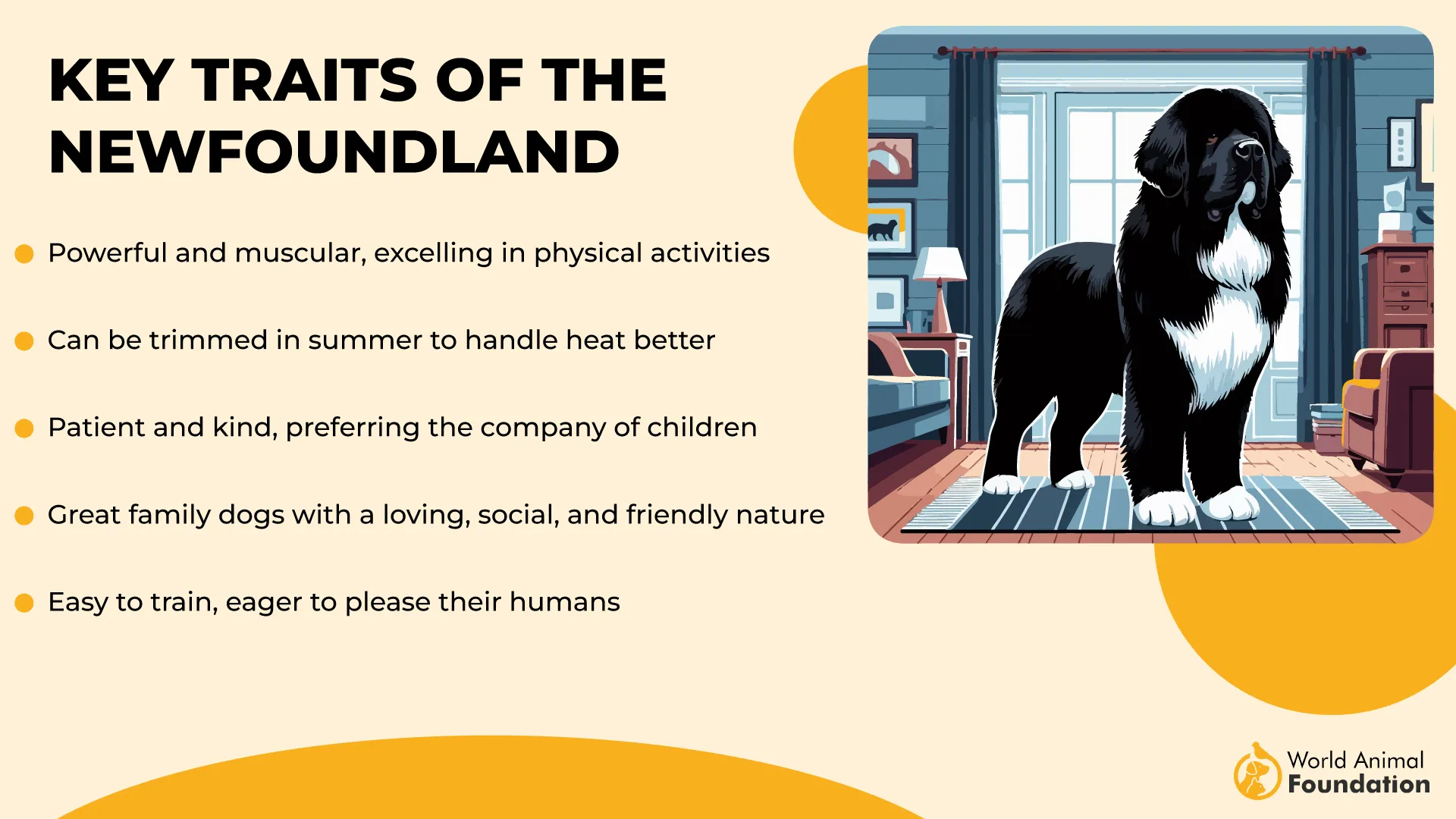
Fun Fact:
Newfoundlands have webbed feet, making them natural swimmers and excellent water rescue dogs.
4. Mastiff
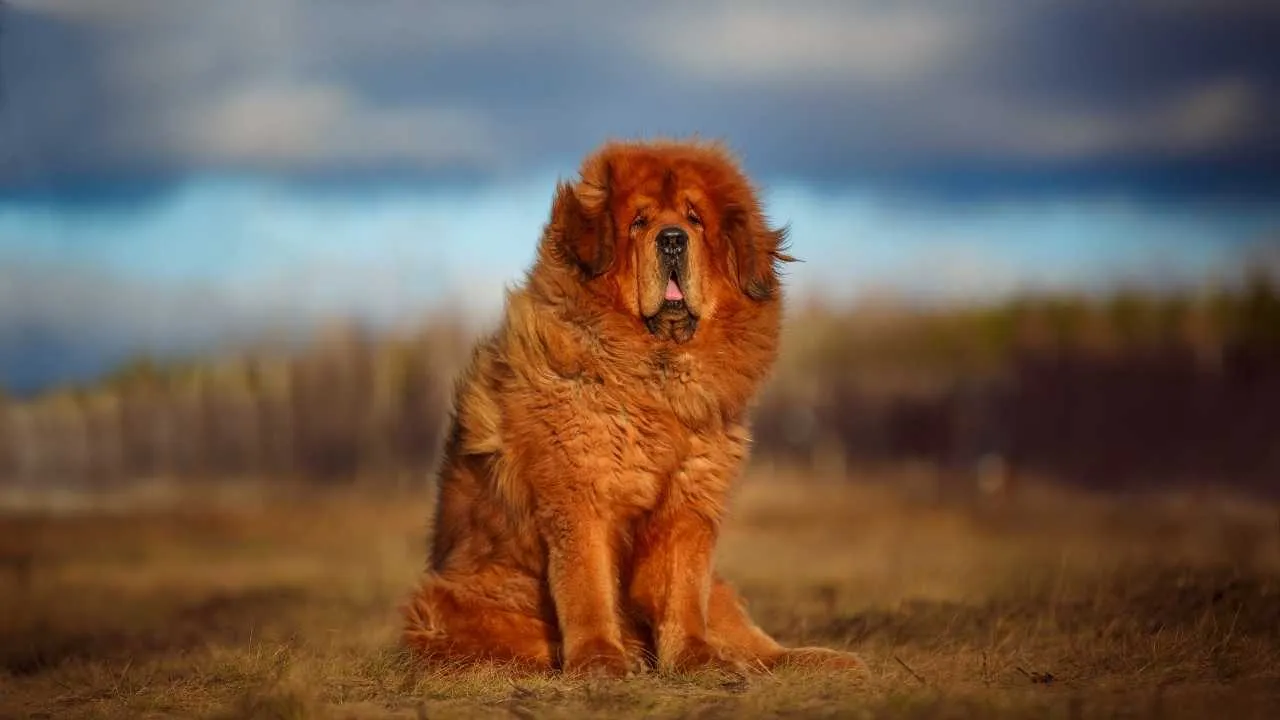
Weight: 120–230 lbs
Height: 27–32 inches
Temperament: Dignified, Protective, Loving
The Mastiff, often referred to as the English Mastiff, is one of the heaviest and most imposing breeds in the world. Despite their sheer size and power, Mastiffs are affectionate, mellow, and deeply bonded to their families.
Originally bred for guarding estates and livestock, Mastiffs possess a natural guarding instinct, as stated by Britannica. They are naturally protective yet not aggressive—more likely to place themselves between their loved ones and a threat than to react with force.
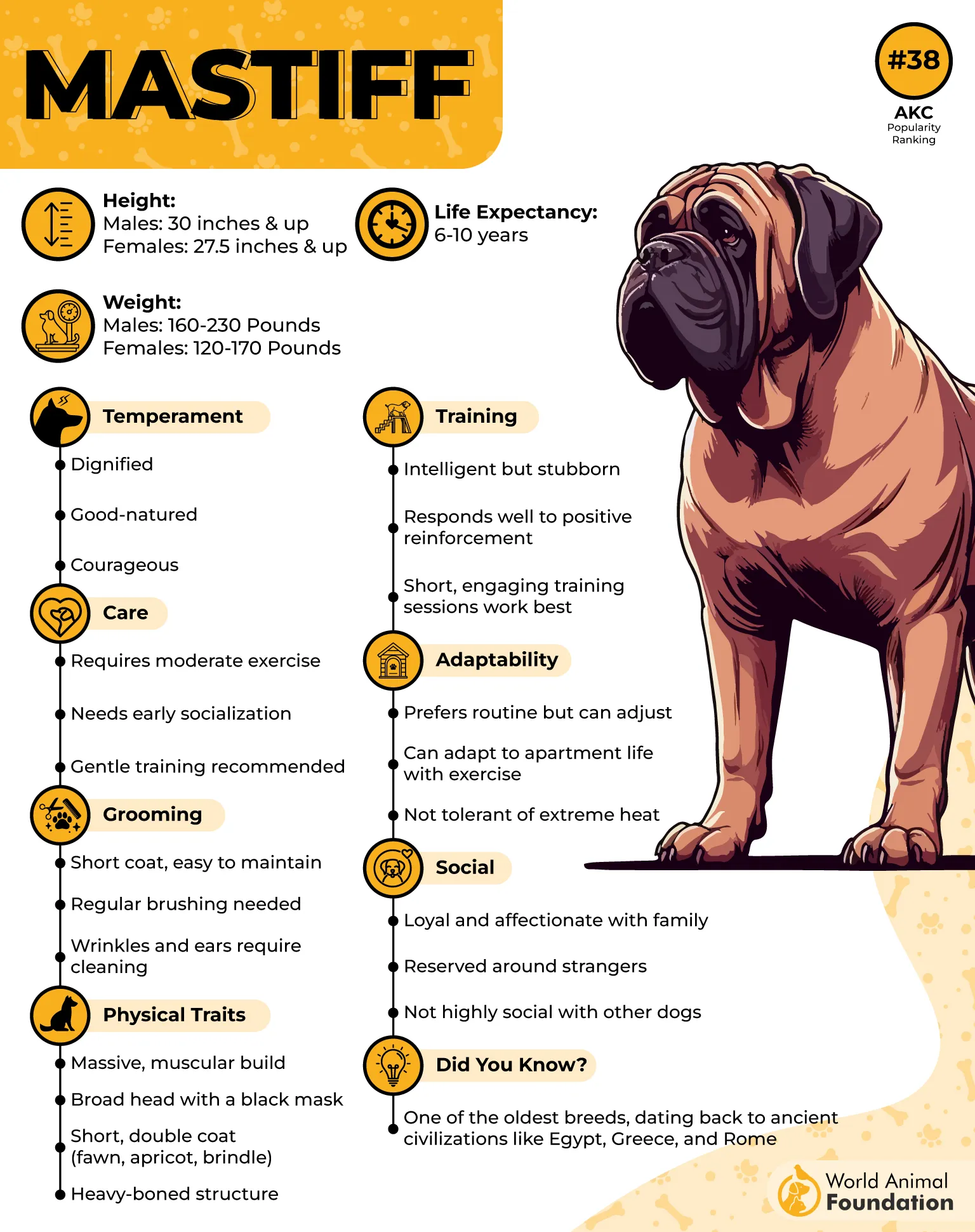
Indoors, they are incredibly laid-back. They enjoy lounging and keeping a watchful eye on their environment. Short walks and structured play sessions help maintain their health and happiness.
Their short coat is low-maintenance, requiring only occasional brushing. However, they do shed moderately and, like other large breeds with loose jowls, they’re known for frequent drooling.
Training a Mastiff should begin early, as their large size makes leash manners and household rules essential. They can be sensitive, so positive, consistent methods work best.
Mastiffs are a wonderful fit for pet owners seeking a great companion that brings calm authority to the home. They need space to move and relax, but above all, they need a close connection with their people.
Fun Fact:
The Mastiff’s ancestors were used as war dogs in ancient Rome, often fighting alongside soldiers in battle.
5. Neapolitan Mastiff
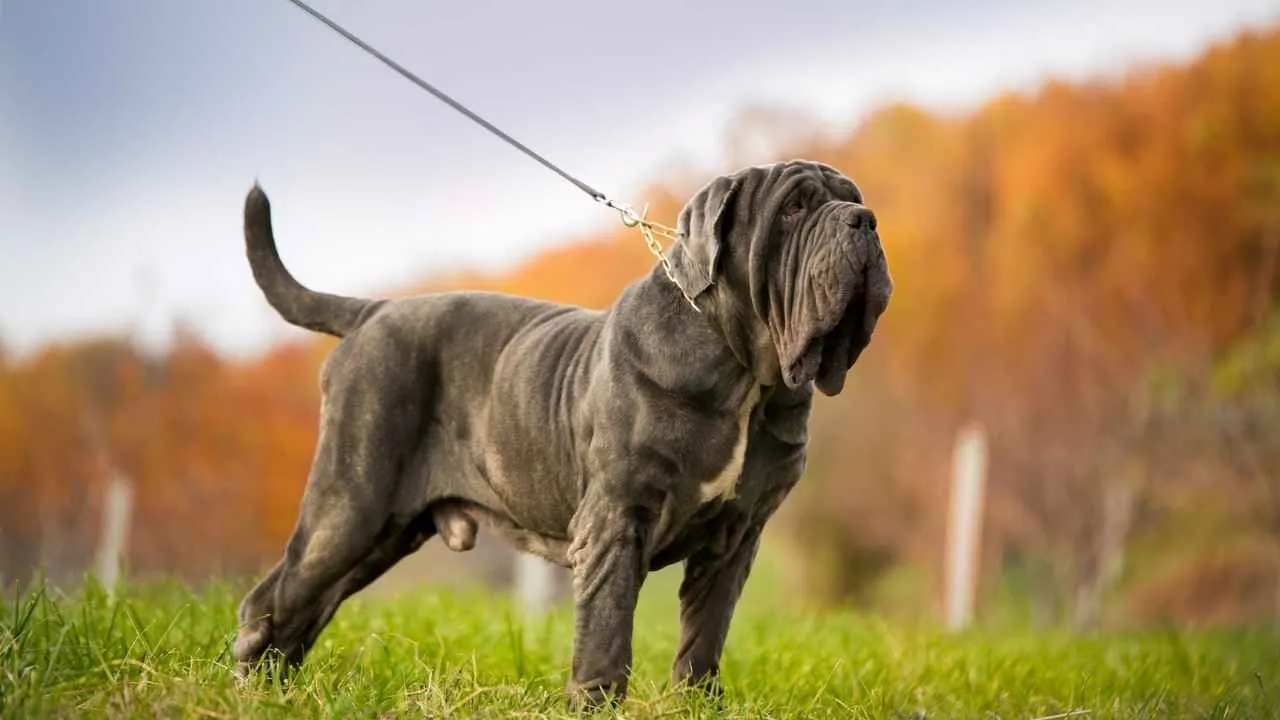
Weight: 110–150 lbs
Height: 24–31 inches
Temperament: Watchful, Steady, Protective
The Neapolitan Mastiff is a breed that commands attention. Known for its deeply wrinkled skin, loose jowls, and massive bone structure, this ancient guardian was bred for intimidation and loyalty.
Despite their fearsome appearance, Neos are calm and affectionate with their families. They’re incredibly naturally protective, making them vigilant watchdogs who take their role seriously.
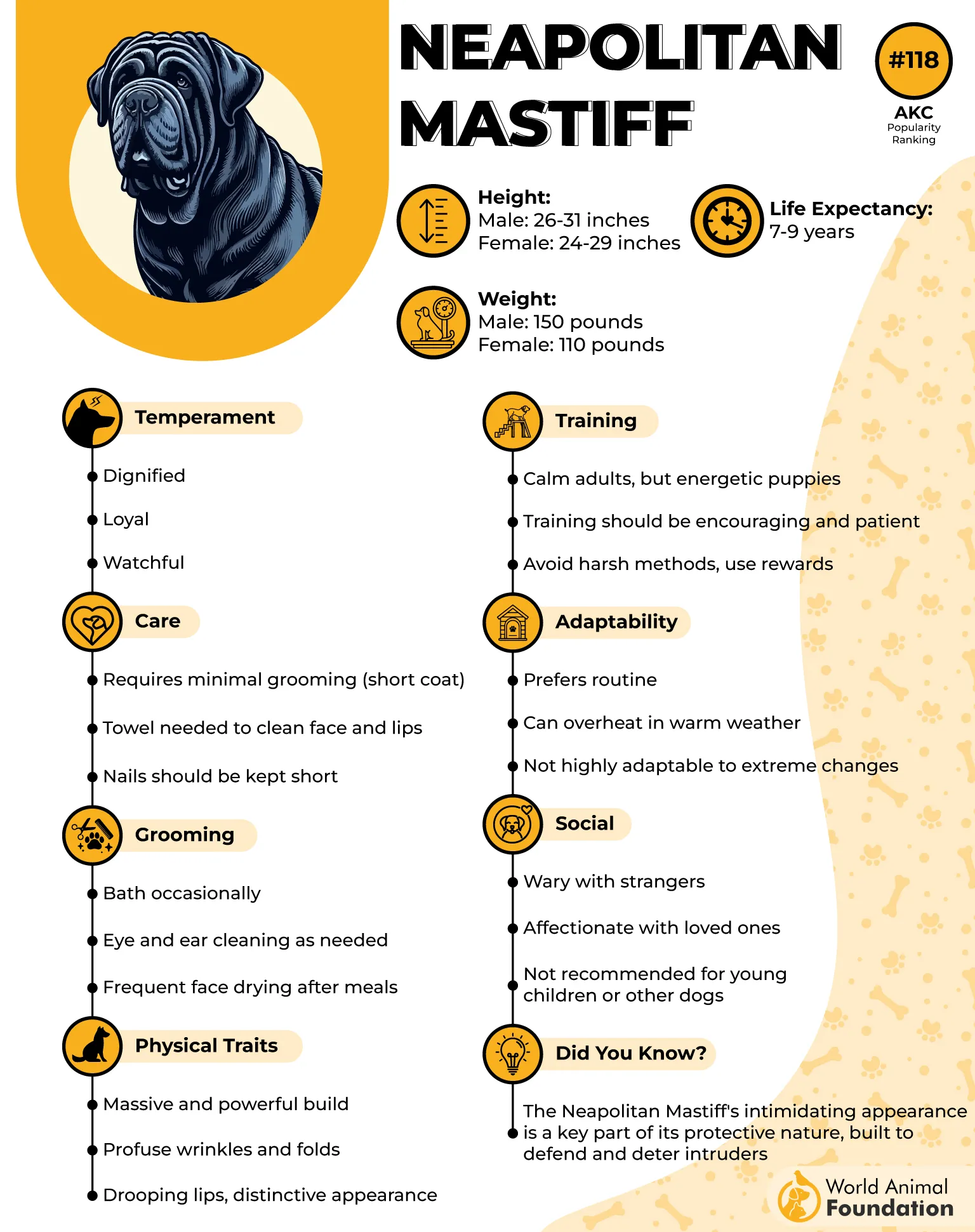
These dogs tend to be quiet indoors and require only moderate daily exercise. Short walks and secure yard time are sufficient, especially given their slow, deliberate gait.
Grooming is straightforward with their short coat, but regular attention to skin folds is essential to avoid infections. Their drool factor is high, so prepare for frequent towel duty.
Early training and socialization are crucial. Neapolitan Mastiffs are independent thinkers and need confident, gentle leadership to thrive. Their sheer strength requires early leash training and clear boundaries.
Ideal for experienced pet owners, this breed thrives in a calm home where their size and guarding instincts are understood. They’re loving protectors, happiest when close to their people.
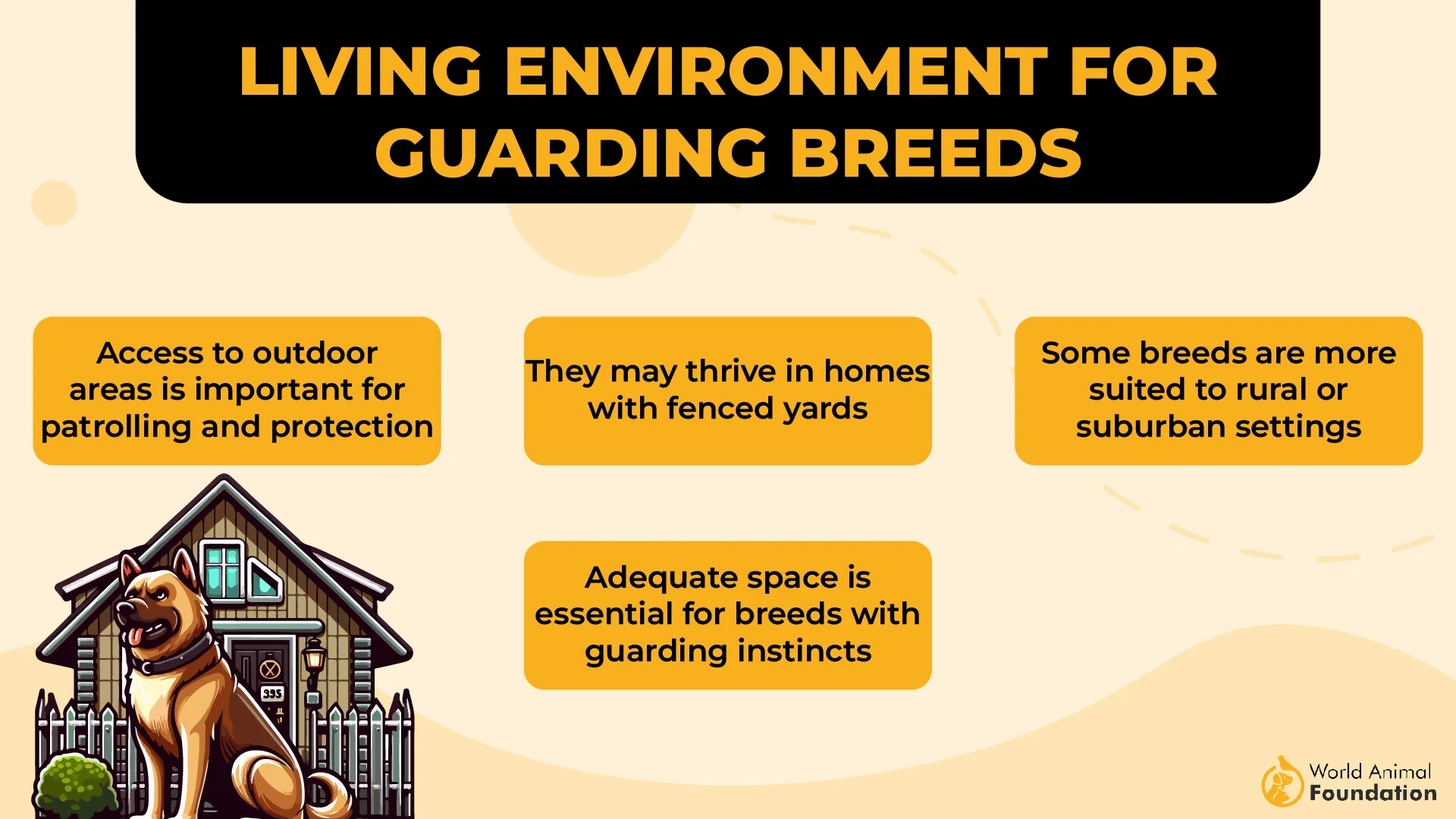
Fun Fact:
The Neapolitan Mastiff’s look hasn’t changed much in centuries—they descend directly from the war dogs of the Roman Empire.
6. Irish Wolfhound
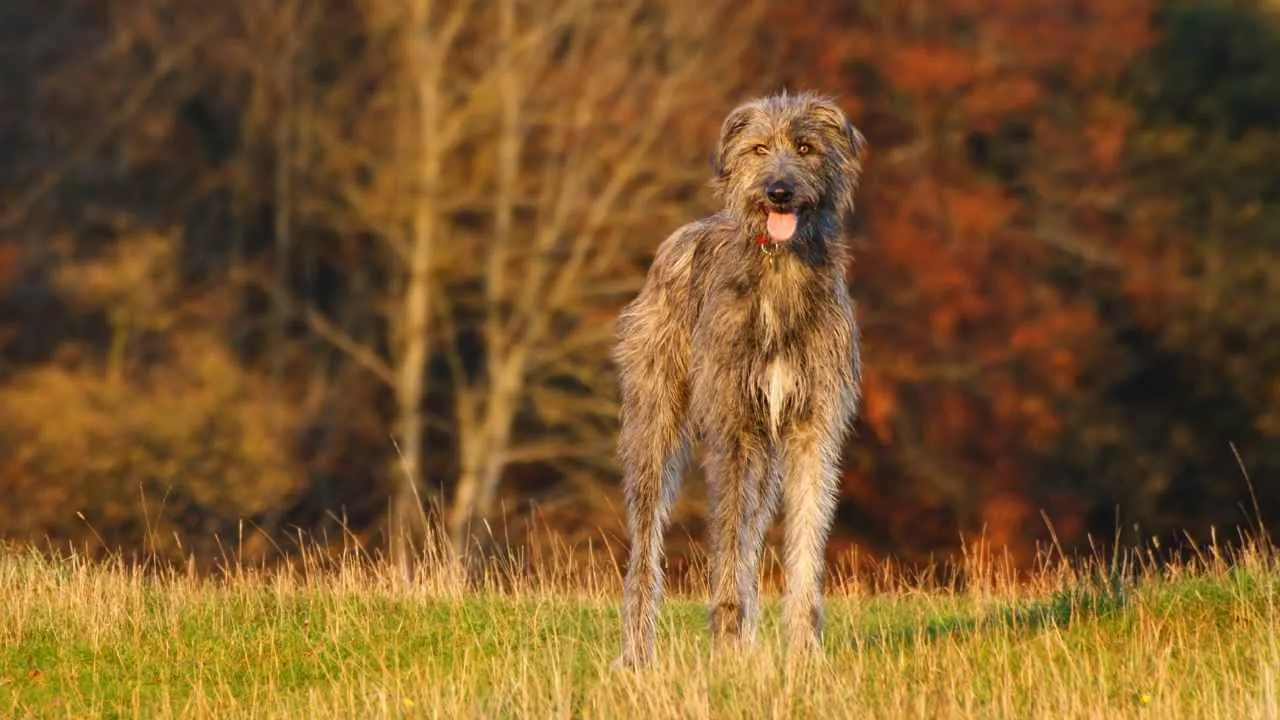
Weight: 105–180 lbs
Height: 30–35 inches
Temperament: Gentle, Dignified, Friendly
The Irish Wolfhound is the tallest dog breed, often standing over 7 feet tall on its hind legs. Originally bred for hunting wolves and large game, this sighthound combines massive height with an elegant, calm demeanor.
Despite their hunting background, Wolfhounds are known for their gentle soul. They are polite, serene, and wonderful with children and other dogs, rarely showing aggression.
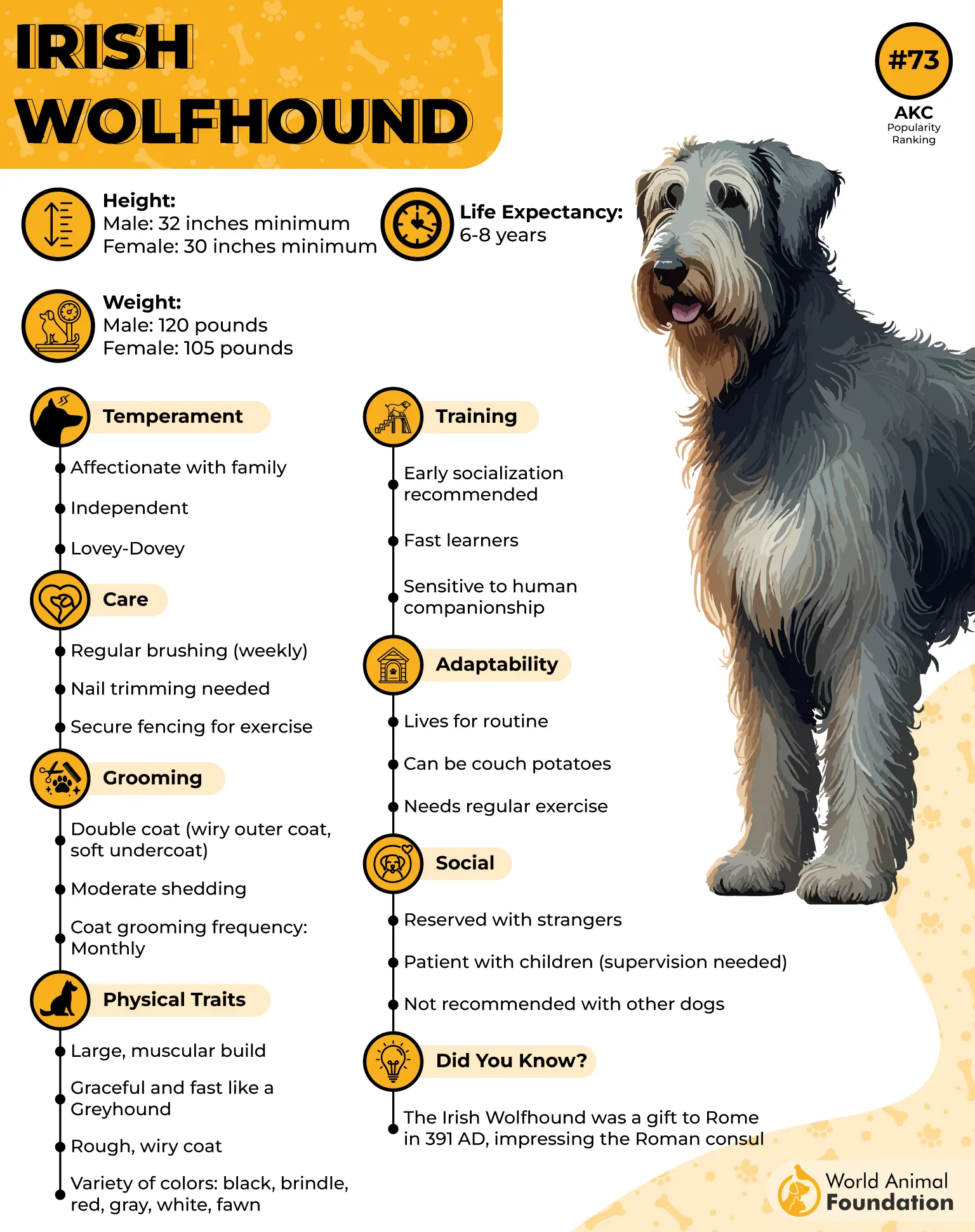
Daily walks and open space for free movement are important. While not hyperactive, their size and endurance call for consistent light to moderate activity.
Their harsh, wiry coat is relatively easy to manage with weekly brushing. They shed moderately and may be more active in cooler climates due to their build and coat.
Training is usually straightforward—they are intelligent and responsive to calm, positive instruction. However, their growth rate demands careful management to avoid stress on developing joints.
Irish Wolfhounds are well-suited to active families who value companionship and a peaceful home. Their towering presence hides a heart that’s tender, affectionate, and always close by.
Fun Fact:
In ancient Ireland, Irish Wolfhounds were so esteemed that only nobility were allowed to own them.
7. Great Pyrenees
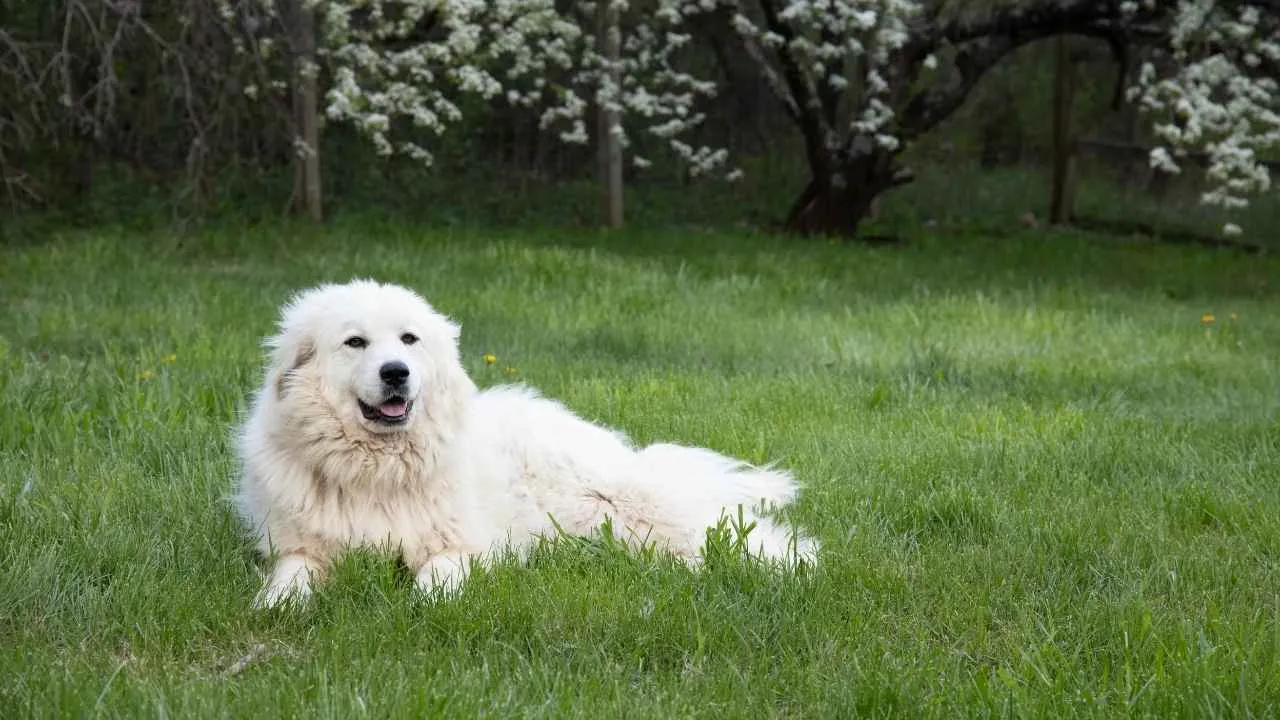
Weight: 85–160 lbs
Height: 25–32 inches
Temperament: Calm, Protective, Patient
The Great Pyrenees is a majestic mountain dog, originally bred to guard flocks in the rugged Pyrenees between France and Spain. With their thick, all-white coat and stoic posture, they embody strength and serenity.
This breed is known for its naturally protective nature. Pyrs are gentle with children and family members but highly alert and wary of unfamiliar people or animals. According to PetMD, they tend to make decisions independently—a trait that served them well as unsupervised livestock guardians.
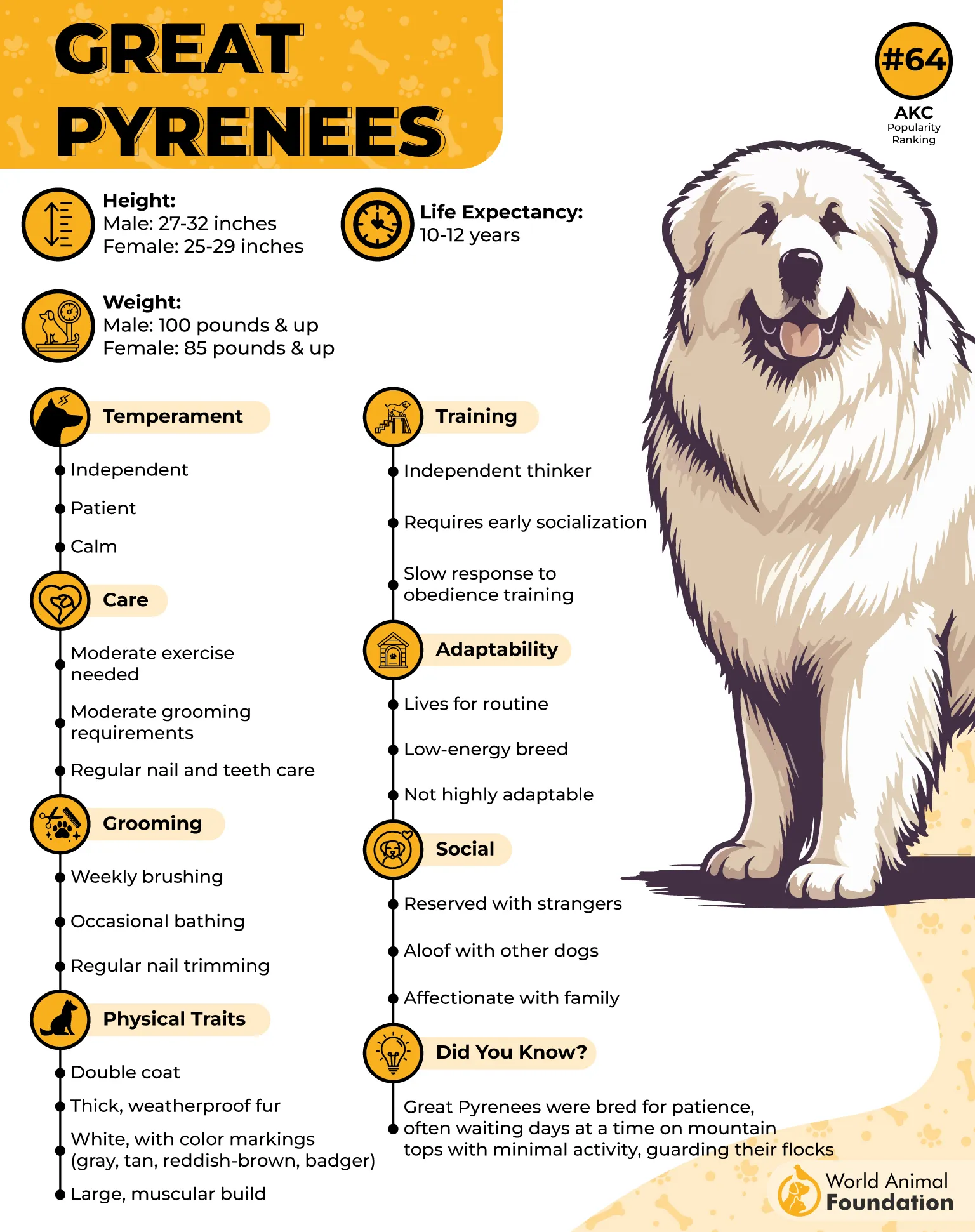
While not high-energy, they require space and regular, calm walks. A securely fenced yard is important, as their independent spirit can sometimes lead them to wander.
Their thick double coat needs weekly brushing and daily attention during shedding season. The white fur is surprisingly dirt-resistant, though regular grooming is essential to prevent matting.
Training requires patience and respect for their independent nature. They’re intelligent but not overly obedient, so early socialization and positive reinforcement are key.
The Great Pyrenees is a superb fit for pet owners who want a loyal companion with a calm demeanor and a strong protective instinct. They’re dignified, loving, and happiest when guarding the ones they love.
Fun Fact:
Great Pyrenees have been guarding sheep for over 5,000 years and were once declared the royal dog of France.
Conclusion
Large-breed dog breeds bring more than just massive size and large stature—they offer deep companionship, steady loyalty, and a sense of calm strength in the home. Whether it’s the gentle soul of a Bernese Mountain Dog, the quiet watchfulness of a Great Dane, or the resilience of an Alaskan Malamute, these big dogs make a lasting impact on those who share their lives.
While their presence is impressive, their needs are often modest. Most large breeds require moderate exercise rather than constant activity. A couple of walks, a chance to stretch in the yard, and time with family often suffice to keep them happy and balanced. What they do need is more space—both to move comfortably and to relax without crowding.
These breeds often thrive around kids, and when properly socialized, they can be gentle, reliable guardians and playmates. Their bark may be booming, but it’s often reserved for when it truly matters. And whether long-haired or short-coated, each pup brings their own charm and rhythm to the house.


